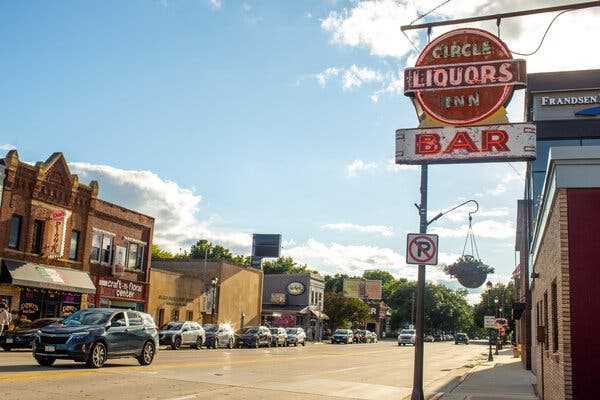The Minnesota governor, No. 2 on the ticket, might not win his old House seat if he were to run now.
- Share full article

Gov. Tim Walz spent much of his adult life in Mankato, Minn., which is in Minnesota’s First Congressional District.
It was an idyllic night at the Nicollet County Fair in St. Peter, Minn., on Thursday. The air smelled like kettle corn, the tractor pull was in full swing, and a trio of lambs named Frank, Freddie and Finn had been selected to go to the State Fair later this month.
But when I asked fairgoers here about their governor, Tim Walz, the mood turned a little less celebratory.
“He leans very left,” said Steve LeBrun, as he waited for his family between an exhibition hall and a beer garden. “I almost feel like we’re becoming a miniature California with some of the stuff that’s going on.”
Nicollet County, an upside-down triangle southwest of Minneapolis, is part of the wide and largely rural swath of Minnesota represented by Walz in Congress before he won the governor’s race in 2018. The success of the camo-hat-wearing, sharpshooting Walz in the First Congressional District, which currently stretches all the way across the bottom of the state, is a big part of why he is seen by Democrats is somebody who can bolster Vice President Kamala Harris, a Bay Area liberal, in key Midwestern states and beyond.
The fact remains, though, that he might not be able to win his old district today.
Last week, after Harris and Walz rallied together in Eau Claire, Wis., I headed down to the district, winding my way about 200 miles from Red Wing on the Mississippi River to the big Farmfest agricultural show in Morgan, just over the district line, back to St. Peter. I saw the world’s largest boot and ate a divine pork chop sandwich — and I caught a glimpse of how tough territory like this has become for Democrats.
Walz beat an incumbent by nearly six percentage points to flip the district in 2006 and won it again by nearly 30 percentage points two years later. But as the rise of Trump drove more rural Republicans to the polls to vote for him, Walz hung on by less than one percentage point in 2016. Over the years, he and the First District seemed to draw apart from each other; he lost the district, which has been slightly redrawn over the years, when he ran for re-election in 2022.
We are having trouble retrieving the article content.
Please enable JavaScript in your browser settings.
Thank you for your patience while we verify access. If you are in Reader mode please exit and log into your Times account, or subscribe for all of The Times.
Thank you for your patience while we verify access.
Already a subscriber? Log in.
Want all of The Times? Subscribe.
SKIP ADVERTISEMENT
Source: nytimes.com



